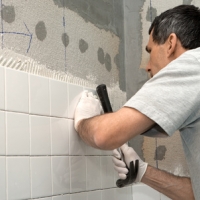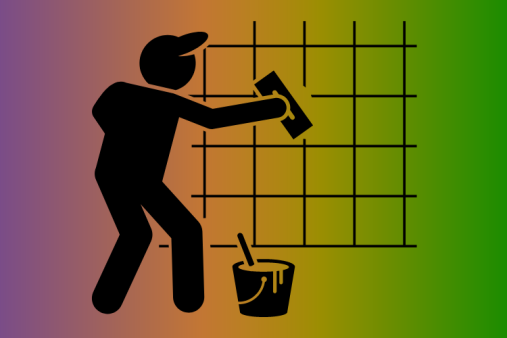How to tile a shower
 Tiling a shower may seem like a fairly simple task but in actual fact, it’s a surprisingly skilled job. if you’ve never done it before you may want to think about getting a professional in to help as there are lots of things that can potentially go wrong.
Tiling a shower may seem like a fairly simple task but in actual fact, it’s a surprisingly skilled job. if you’ve never done it before you may want to think about getting a professional in to help as there are lots of things that can potentially go wrong.
Whilst all installations require strict attention to layout, design, bonding and placement, tiling a shower provides additional challenges, such as waterproofing and allowing for proper drainage.
Step 1: Strip back the old wall and tiles:
If you have old tiles still fixed to the wall, it’s easiest to just start from scratch and remove the whole thing down to the stud frame.
Once you’ve done this you can then start waterproofing the walls by fixing a vapour barrier across the stud frame.
Always make sure you leave a small gap at the top and avoid going all the way to the ceiling, as this will allow any moisture behind the barrier some space to breathe and disperse.
Step 2: Install Cement Backboard
Before you can start tiling, you will need to install a cement backboard.
Cement board is a thin layer of mortar sandwiched between sheets of fiberglass mesh cloth. The board is unaffected by water and is fairly easy to put up whilst being easily available at most building supply centers.
To attach the cement board to the studs, you will need special cement board screws.
These screws have a coating to resist corrosion and hi-low threads for a strong grip.
Step 3: Start levelling and marking the first row of tiles
Now you’ve prepared the wall you can start tiling.
You should always tile the floor first before fitting any shower tray or tiling the walls.
Having the tiles under the tray means if the silicone cracks its much harder for water to get under the shower tray and avoids and drainage problems.
To measure the position of the tiles, mark the height of one full wall tile from the lowest spot on the floor.
Place a tile in position, and measure up from there. You will need to use a level to make sure it’s straight.
Step 4: Laying the tiling
You will need to mix a substantial amount of thin set mortar in order to hold the tiles in place.
This should be the consistency of peanut butter and not too wet.
Don’t forget to dampen the cement board with a sponge before applying the mortar however, as failure to so can cause the cement to crack.
Next trowel some of the mortar onto the back of the tile and spread it with a notched trowel.
This process is called "back buttering,"
5: The Finish
Once you’ve let the tiles set (you should leave at least 48 hours) you will need to grout in-between the gaps using a float.
This ensures no water can get in-between the cracks and helps stop the tiles from slipping.
You can remove any excess grout with a sponge after you’ve finished.
Once the grout has been left to seal properly, you will need to finish it off by using a grout protector spray .
This helps to stop penetration by water, grease and lime scale etc.








